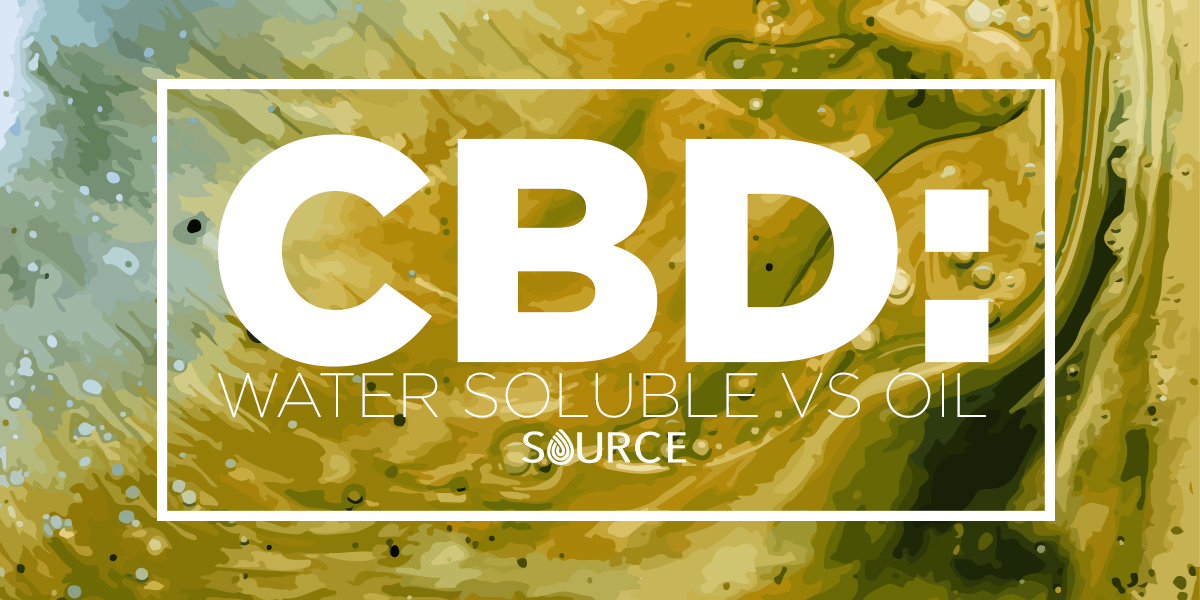CBD Oil for Health
Water Soluble CBD VS Oil: A Breakdown
When it comes to CBD, there are a ton of different terms you hear tossed around. Organic, CO2 extraction, hemp-derived… and then of course you have water soluble CBD. That’s one we’re hearing more and more about these days. If you haven’t heard it yet, just give it time – you probably will.
And of course, with it comes confusion. What exactly is water soluble CBD oil, and how does it differ from traditional CBD oil?
Let’s find out.
What is Water Soluble CBD?
The term water soluble means that a substance dissolves in water. You’ll see this term used a lot when referring to nutritional supplements like vitamins.
Just like any other type of oil, CBD oil is hydrophobic, meaning it doesn’t dissolve in water. It isn’t water soluble. It’s actually fat soluble (but we’ll come back to that).
Water soluble CBD is CBD that’s been processed to break the oil particles apart into tiny molecules. Then they’re emulsified, which make them more compatible with water. This process allows them to disperse through the water in your body. Technically, it isn’t water soluble, but it is more water friendly.
You may also hear it referred to as nano CBD and nanoemulsified CBD, but these are all used interchangeably and all refer to the same thing.
When you think about the fact that more than 60% of your body is made of water, it might seem logical that water soluble is better. And yes, some make that claim. But, of course, there’s more to the story.
And it has a lot to do with bioavailability…
Bioavailability Basics
Bioavailability refers to how much the human body can process and use of a substance.
When you ingest CBD on it’s own, it doesn’t have great bioavailability because of how your digestive system receives it. Something called first-pass metabolism reduces the concentration of CBD before it reaches circulation.
So, in other words, when you ingest CBD, the concentration is reduced.
But wait!! Stick with us.
Thankfully, using a topical CBD salve or taking CBD sublingually (holding it under your tongue) doesn’t have this same issue. First-pass metabolism only affects the bioavailability of CBD when you consume it orally. So when you take a capsule or an edible, or just swallow the oil, for example.
When you apply a topical or take CBD sublingually, these methods allow the CBD to directly enter your bloodstream. They don’t have to go through the digestive system and so the bioavailability isn’t negatively affected.
Plus, then you’ve also got carrier oils. These help boost the bioavailability.
In order for your body to use a fat-soluble substance like CBD, it needs to mix with a carrier to form little clusters of molecules called micelles. These micelles then enter the fatty lymph tissue, which is a network of fat-based compounds and immune cells. Then they can be distributed through the bloodstream to the different parts of the body.
This is why many companies infuse the CBD into a carrier oil, like coconut or hemp oil. To make it more bioavailable and help offset the impacts of first-pass metabolism if you do choose to take it orally.
Is Water Soluble CBD Better?
There are some that claim water soluble CBD is better. We don’t agree – we’re likely always going to be fans of the traditional. And while there are some benefits, the are also some drawbacks.
Because of the way CBD is metabolized by the liver, a traditional CBD tincture can stay longer in your body and may therefore have a longer lasting effect compared to water soluble CBD.
Additionally, the process to make CBD water soluble requires the use of surfactants, which dilute the CBD. And yes, while several natural options are available with minimal negative effects, we believe it’s better to use as little surfactants as possible – and none is best!
All that said, there may be room in the CBD world for both – as both offer distinct positives when it comes to taking advantage of everything CBD has to offer. As more research is done, it is important to look at everything and always continue learning.

